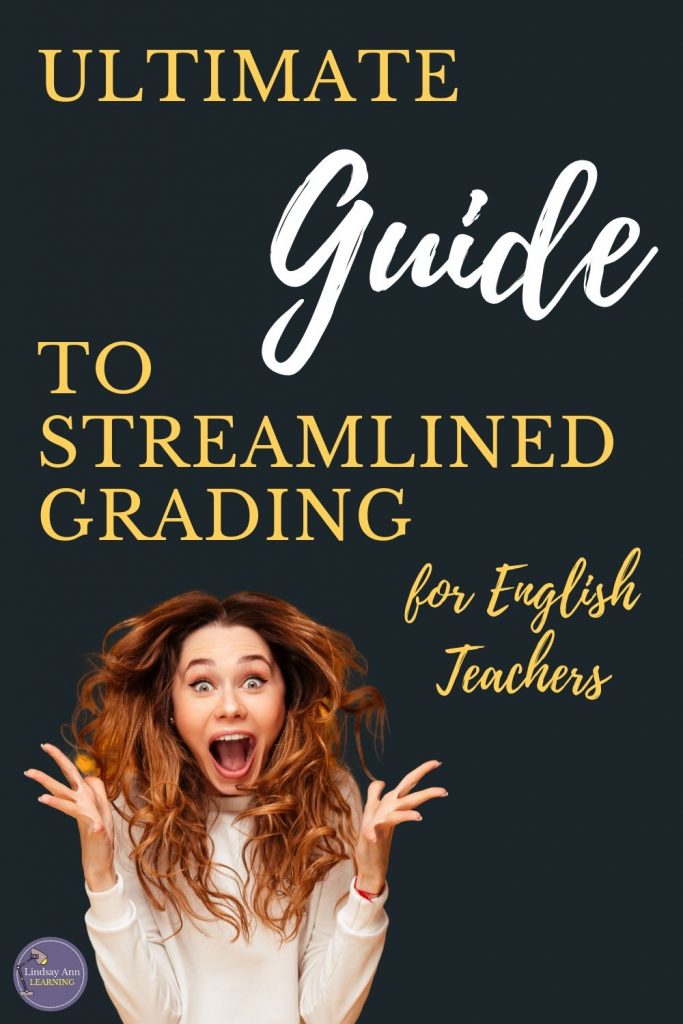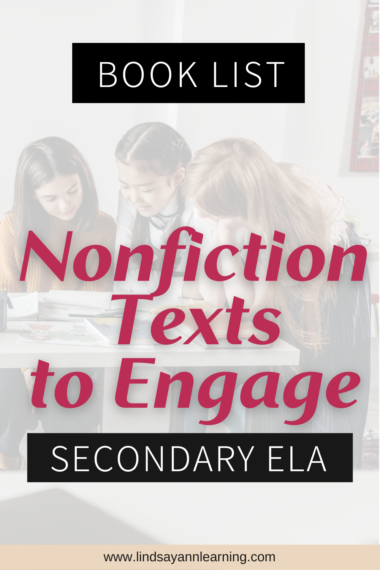Have you tried summary and response essays in your English language arts classroom? In this post, we’ll explore the benefits of summary and response, and I’ll offer questions you can use to help your students find just what they want to say in a They Say, I Say assignment.
It is my hope as an English teacher that my students will write with frequency and with voice.
To this end, I frequently ask them to compose written responses to various texts we read in class, from short stories, to poems, to nonfiction articles.
Goals of a Summary and Response Essay
First, I want students to closely read the text. This means reading (and re-reading) for critical understanding of the text, making marginal notes, and marking important passages. As students closely read, they should be thinking about the author’s message, style, and impact on them as readers.
Although a summary-response paper may be intended to demonstrate that students have read the required text(s), I want more than simple reading comprehension.
I want students to think critically.

Therefore, I teach students to read for comprehension so that they can join the conversation started by the author.
In this conversation, students must be prepared to respond and evaluate, adding unique thought and analysis prompted by the original text, extending the author’s thoughts with their own. This is what summary and response essay writing is all about.
To state it simply, I often use the analogy of a dinner table conversation. I tell students that reading a text is like pulling up a chair to the dinner table (the text is the main course). To join the dinner conversation, they must be unique, they must do more than summarize the original text, and they must spend time thinking.
Summary Writing Tips
Writing a summary is a lot like the “echo back” step in a good conversation. It’s a check for understanding. Before I move on to add my own thoughts into the conversation, I want to make sure that first I am hearing and understanding what the other person is saying.

This is the “they say” part of response writing.
➡️ It should be in students’ own words. It should be brief, yet long enough to fully represent the author’s main claim and key supporting points.
❗️ Summary writing is one of the BEST ways for students to improve their reading comprehension, and with increasingly complex texts, students must learn to represent increasingly complex ideas and nuanced organizational structures used by an author to convey his or her ideas.
The first step in writing a good summary is to mark the text. I model this for students, showing them how I recognize what a paragraph or section of the text or the text as a whole is about. I talk out loud, state what I wonder and what I notice. Then I ask students to join the conversation by doing the same.
As I do this, I am emphasizing that this is a conversation students are preparing to join. We have to first understand the message that an author is saying.
- So, what is this author trying to say?
- What points is the author making?
- What organizational choices does the author use to convey his or her ideas?
- What relationships are directly stated or implied between ideas?
- What is the larger context for this conversation?
- How does the author’s message fit into the context?
- What bigger picture significance of this topic does the author discuss or imply?
All of this starts with the question of “what do you notice?”
As students make observations, I help them start to weave together these observations so that they can notice patterns and the author’s overall claim or message.
And, with practice, students begin to do this on their own in a summary and response essay.
Best Ways to Respond to a Text
➡️ After students are able to fully understand and represent the author’s ideas and convey this in the “They Say” portion of their response, we add the “I Say” portion of the response.

❗️ In the beginning of the year, we focus solely on the “They Say” in writing until students are demonstrating proficiency. As they do this, I frontload “I Say” skills through informal conversation and debates in the classroom. That way, when I ask students to formalize their thoughts in an “I Say” written response, they are ready.
For the “I Say,” it’s important to recognize the connection between written opinion and voiced response. Some students need to talk through their opinions before fully developing them in writing.
For students to be able to add their own ideas to the author’s ideas in a summary and response essay, they must first have something unique and important to say.
➡️ A sign of undeveloped thinking in response is if a student simply regurgitates the author’s ideas without extending these ideas through new examples or divergent thinking.
❗️ I want my students to say “yes, AND” or “yes, BUT” to the author. I want them to make their own opinions and examples heard as a part of the conversation as if they are sitting down to dinner with the author and discussing the focus topic in detail.
Questions for Response Writing
The following list will help students shape the thinking that they will produce in response to different texts.

➡️ For all of these suggestions, students should always connect back to the original text(s) with in-text citations, quotes and paraphrasing when appropriate (but be careful not to over-quote or over-paraphrase – you want this paper to be based on the original text, but also a reflection of your own thinking).
Ways to Say “Yes, And” or “Yes, But” in Response
Ask a Question:
- Pose a related question to the author and explain how the author might answer it
- Generate a question that the text prompts of you and answer it
- Generate a question that the text prompts of you, and use additional research to extend the author’s ideas
Use Comparison/Contrast:
- Compare an author’s claim to the claim(s) made in a different text or by a different author
- Show how an author’s perspective or claim is different from something else or someone else’s idea
Try Analysis:
- Explain an emotional response to the piece you had and analyze what made you have this reaction: was it something about yourself, culture, or society?
- Explain why you had a hard time connecting with a text or an author’s claim
- If responding to an older text or a different cultural text, explain how the author’s claim might function or malfunction in today’s society or your culture
- Explain how this text could be seen differently through another person’s or another theory’s perspective
- Explain how a controversy or other historical situation may have given rise to the author’s essay
- Expose how your own bias or assumptions may interfere with your reading experience
Say “Yes, And”:
- Extend one of the author’s ideas into a broader context discussion. In other words, what is this idea a part of?
- Pose an observation or realization this text sparks in you
- Pose an important word or concept and explain how the author might define it
- Examine a similar or parallel issue that this text is related to
Use Argumentation For or Against an Idea Offered by the Author:
- If you turned the subject of this text into a question on which people would vote, how would you vote – and why?
- State one of the author’s claims and bring in additional outside reasons and evidence (personal or researched) for or against this claim
- Explain your subtly different definition of a term or perspective of a claim, and why this difference, while subtle, is important
- Expose an author’s assumption or bias and explain why this assumption or bias weakens or strengthens his/her idea
Use Argumentation For or Against the Way an Author Presents Ideas:
- Evidence: Do facts and examples fairly represent the available data on the topic? Are the author’s facts and examples current, accurate?
- Logic: Has the author adhered to standards of logic? Has the author avoided, for instance, fallacies such as personal attacks and faulty generalizations?
- Development: Does each part of the presentation seem well-developed, satisfying to you in the extent of its treatment? Is each main point adequately illustrated and supported with evidence?
- Fairness: If the issue being discussed is controversial, has the author seriously considered and responded to his opponents’ viewpoints?
- Definitions: Have terms important to the discussion been clearly defined – and if not, has lack of definition confused matters?
Audience: Is the essay appropriate for its audience – does it convince who it’s intended to convince?
Wrapping Up
Thanks for reading this post! Phew, it was a long one, but I hope that you found questions that will help your students be successful with summary and response essay assignments. Please leave a comment below to let me know what you thought and if I can help!
Hey, if you loved this post, I want to be sure you’ve had the chance to grab a FREE copy of my guide to streamlined grading. I know how hard it is to do all the things as an English teacher, so I’m over the moon to be able to share with you some of my best strategies for reducing the grading overwhelm.
Click on the link above or the image below to get started!
















 How to Teach Writing for Clarity Better Than Anyone Else
How to Teach Writing for Clarity Better Than Anyone Else

[…] reading, making marginal notes, and marking-up important passages. Teaching students how to write a summary and response as a result of their critical reading is an important next […]